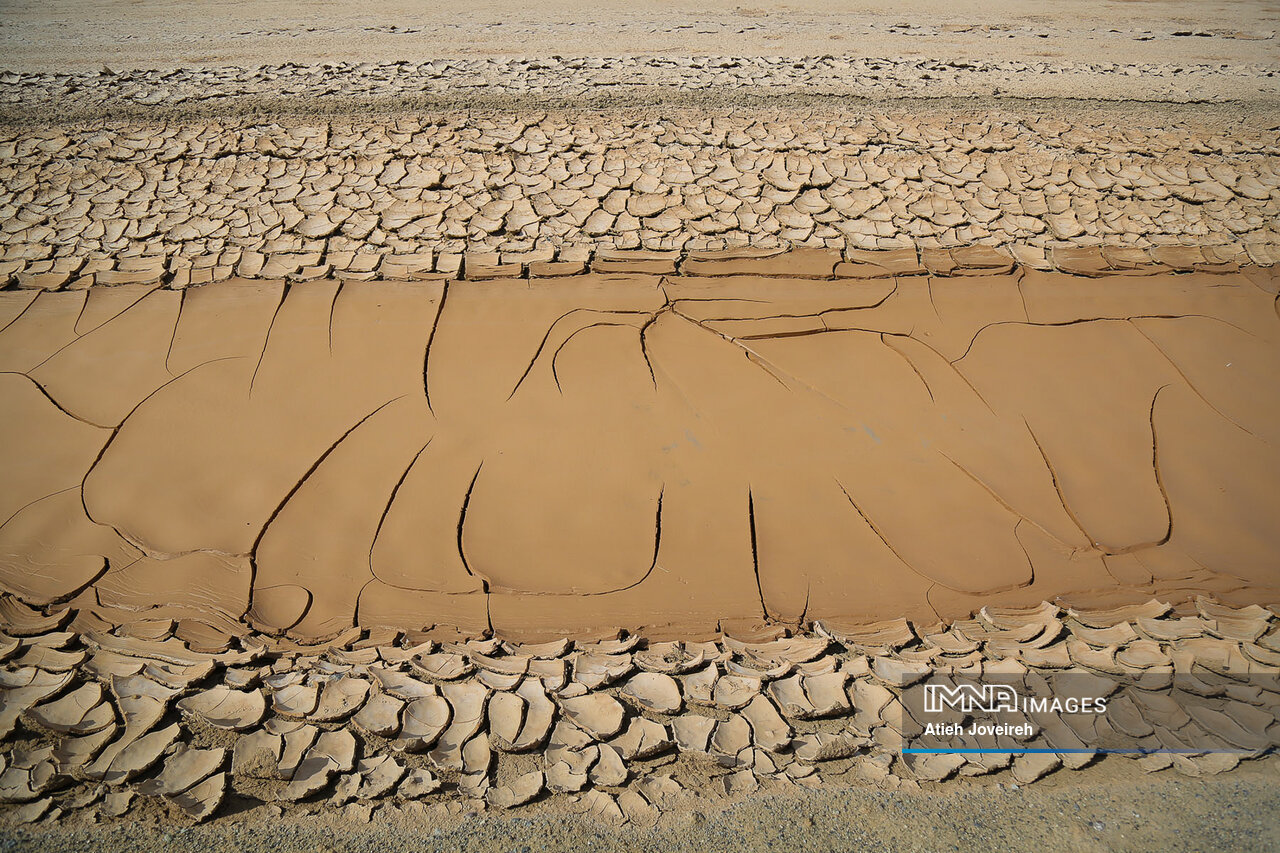Iran (IMNA) - Iran, situated in a dry and semi-arid area, has always strived to maximize its water resources. Unfortunately, the severity of the drought has escalated in recent times, pushing Iran into a state of water scarcity. This water crisis is expected to persist during the upcoming fall season, characterized by high temperatures and limited rainfall, as stated by Ahad Vazifeh, the director of the national center for drought and crisis management.
In light of these circumstances, authorities and specialists are presenting diverse strategies to achieve efficient water utilization.
According to Alireza Qazizadeh, a water and environment expert, the country receives an annual rainfall of 250 mm, which amounts to approximately 400 billion cubic meters. However, due to evaporation, only 130 billion cubic meters of water are renewable, with an additional 13 billion cubic meters coming from border waters.
Referring to the average global rainfall of 800 ml and evaporation of 700 mm, it is noted that 70 percent of Iran's rainfall occurs in only 25 percent of the country, with only 25 percent of the rainfall happening during irrigation seasons.
Highlighting the current year's water requirements of 113 billion cubic meters (starting from March 21), Qazizade stated that it is projected that 102 billion cubic meters will be used for agriculture, 7 percent for drinking purposes, and 2 percent for industrial use, resulting in water stress.
In 2001, approximately 5.5 billion cubic meters of underground water resources were withdrawn annually. If we consider this withdrawal as ongoing for 20 years, it means that we have exhausted the equivalent of one year's worth of water consumption from non-renewable sources, which is a cause for concern.
The Ministry of Energy reports that there are approximately 36,300 qanats in Iran, which have been providing water for over 2,000 years. In recent times, efforts have been made to rehabilitate 3,800 qanats through watershed and aquifer management. This has allowed people who had previously migrated due to water scarcity to return to their homes.
However, there is a concerning trend of shrinking water resources in Iran. Qasem Taqizadeh, deputy minister of energy said in June that over the past four decades, renewable water resources have decreased by 30 percent, while the population has increased by about 2.5 times.
He noted that the current water year has experienced the lowest rainfall in 52 years, highlighting the impact of climate change on Iran's arid region.
Rasoul Sarraf, a member of the Faculty of Materials at Shahid Modarres University, proposes an alternative approach to address water scarcity. According to him, in order to alleviate water stress, we must resort to the utilization of nanotechnology and solar power plants.

The role of solar power plants and nanotechnologies to combat drought
In recent years, the world has witnessed significant advancements in renewable energy sources, with solar power emerging as one of the most promising options. Solar power plants harness the abundant energy from the sun and convert it into electricity, providing a sustainable and environmentally friendly alternative to traditional fossil fuel-based energy generation.
To address environmental challenges and promote sustainable development, we should consider the intersection of solar power plants, watershed management, and nanotechnology, and their combined potential.
Solar power plants: a clean energy solution to preserving water resources
Water management refers to the holistic approach of protecting and managing the entire area that contributes water to a particular water body, such as a river or lake. Solar power plants can play a vital role in enhancing watershed management efforts in the following ways:
- Water pumping: Solar-powered pumps can be used to extract water from rivers, lakes, or underground sources for agricultural activities, reducing reliance on diesel-powered pumps and minimizing water scarcity risks.
- Water treatment and purification: Solar energy can power water treatment plants, facilitating the purification of water resources and ensuring access to clean drinking water for communities residing in remote areas.
- Monitoring and data collection: Solar-powered sensors and monitoring systems can be deployed across watersheds to collect real-time data on water quality, flow rates, and weather conditions. This information is crucial for effective watershed management and informed decision-making.
- Irrigation Efficiency: Solar-powered irrigation systems can optimize water usage in agriculture. By utilizing solar energy to power irrigation pumps, farmers can efficiently distribute water to crops, minimizing water wastage and increasing overall irrigation efficiency. This approach helps combat drought by conserving water resources and maintaining agricultural productivity.
- Energy independence: Solar power plants can be installed on rooftops, open fields, or even in remote areas, providing decentralized energy solutions and reducing dependence on centralized grids.
Nanotechnology: revolutionizing environmental solutions
Nanotechnology involves the manipulation and control of matter at the nanoscale level. When combined with solar power plants and watershed management, nanotechnology can offer innovative solutions to environmental challenges:
- Efficient solar panels: Nanomaterials can enhance the efficiency of solar panels by capturing a broader spectrum of sunlight and improving energy conversion rates. This advancement could lead to more compact and cost-effective solar power plants.
- Water filtration and desalination: Nanotechnology-based membranes and filters can effectively remove contaminants, bacteria, and salt from water sources, making it suitable for various applications, including drinking water supply and industrial processes.
- Pollution remediation: Nanoparticles can be used to break down pollutants and contaminants in soil and water bodies, aiding in the remediation of polluted environments. Solar power plants can provide the energy required for these nanotechnology-based remediation processes.
- Smart Water Monitoring: Nanotechnology enables the development of smart sensors capable of detecting and quantifying water-related parameters, such as pH levels, temperature, and chemical composition. These sensors provide real-time data, allowing for proactive water management and early detection of drought conditions. Such information empowers policymakers and water resource managers to implement appropriate measures promptly.
- Hydrogel Technology: Hydrogels, composed of superabsorbent polymers, have the ability to capture and retain large amounts of water. By incorporating nanomaterials into hydrogels, their water absorption and retention capacities can be significantly enhanced. This technology has the potential to improve soil moisture retention, increase plant water uptake, and ultimately aid in combating drought stress in agriculture.
The integration of solar power plants into watershed management efforts and the application of nanotechnology are promising strategies to combat drought and enhance water efficiency. Solar energy provides a sustainable and clean source of power for water pumping, treatment, and irrigation systems, while nanotechnology offers innovative solutions for water filtration, monitoring, and conservation. By harnessing these technologies, we can take significant strides towards mitigating the impacts of drought and ensuring a secure water future for generations to come, and pave the way for a greener and more resilient future.
Governments, research institutions, and industries must collaborate to further explore and implement these synergistic approaches, ensuring a harmonious balance between energy production, water conservation, and environmental protection.


Your Comment